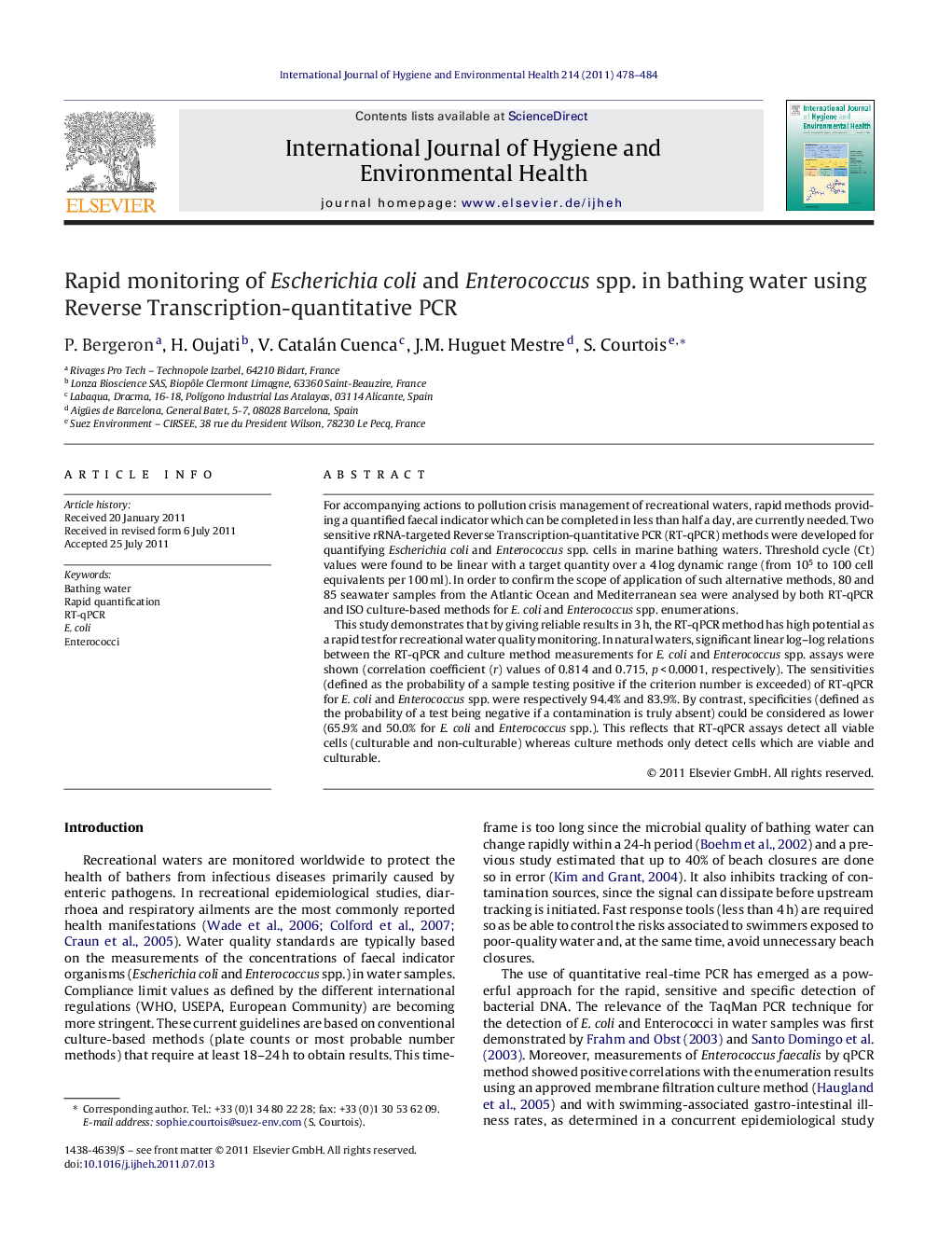| Article ID | Journal | Published Year | Pages | File Type |
|---|---|---|---|---|
| 2588700 | International Journal of Hygiene and Environmental Health | 2011 | 7 Pages |
For accompanying actions to pollution crisis management of recreational waters, rapid methods providing a quantified faecal indicator which can be completed in less than half a day, are currently needed. Two sensitive rRNA-targeted Reverse Transcription-quantitative PCR (RT-qPCR) methods were developed for quantifying Escherichia coli and Enterococcus spp. cells in marine bathing waters. Threshold cycle (Ct) values were found to be linear with a target quantity over a 4 log dynamic range (from 105 to 100 cell equivalents per 100 ml). In order to confirm the scope of application of such alternative methods, 80 and 85 seawater samples from the Atlantic Ocean and Mediterranean sea were analysed by both RT-qPCR and ISO culture-based methods for E. coli and Enterococcus spp. enumerations.This study demonstrates that by giving reliable results in 3 h, the RT-qPCR method has high potential as a rapid test for recreational water quality monitoring. In natural waters, significant linear log–log relations between the RT-qPCR and culture method measurements for E. coli and Enterococcus spp. assays were shown (correlation coefficient (r) values of 0.814 and 0.715, p < 0.0001, respectively). The sensitivities (defined as the probability of a sample testing positive if the criterion number is exceeded) of RT-qPCR for E. coli and Enterococcus spp. were respectively 94.4% and 83.9%. By contrast, specificities (defined as the probability of a test being negative if a contamination is truly absent) could be considered as lower (65.9% and 50.0% for E. coli and Enterococcus spp.). This reflects that RT-qPCR assays detect all viable cells (culturable and non-culturable) whereas culture methods only detect cells which are viable and culturable.
